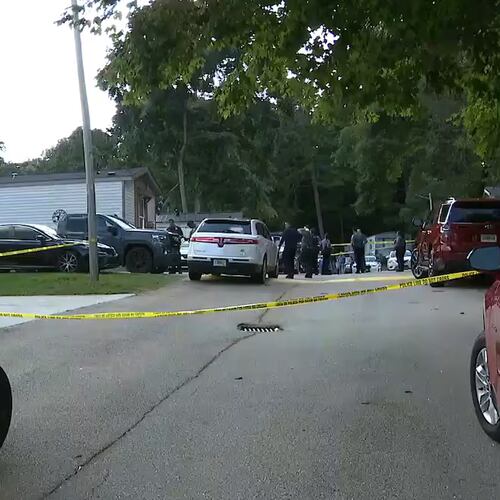If you live in Georgia, then you know there are two main weather seasons to worry about: tornadoes in the spring and hurricanes in the summer.
Both are characterized by extremely strong, swirling winds that are deadly and capable of large-scale devastation. But what are their differences, and what do you need to know to prepare for each?
Tornadoes
In the Southeast, tornadoes are most likely to occur between March and May with a peak in April, according to the National Weather Service. But they can spin up any time of year, producing violent winds as strong as 100 to 300 mph. The strongest ones can last anywhere from 20 minutes to more than an hour, the NWS says.
Georgia’s most deadly tornado is also the nation’s fifth deadliest. It struck in Gainesville on April 6, 1936, and killed 203 people.
About 37% of twisters are classified as EF-2 or greater — that’s on the Enhanced Fujita Scale, which goes up to EF-5. While Georgia has seen a few EF-4 tornadoes, the state has never recorded an EF-5, the NWS reports. The most recent EF-4 twister touched down on April 27, 2011, in Catoosa County.
The entire state is prone to tornadoes, and they are most likely to form in the mid-afternoon to early evening. But really, they can arrive at any time, weather experts warn. This week’s EF-2 twister, for example, touched down near Conyers just before midnight and stayed on the ground for over 10 minutes.
Tornadoes are often hard to spot, as they typically form amid heavy rain and hail. So what are the warning signs?
Look for any clouds with visible rotation extending outward from the main storm cloud’s base, according to the National Oceanic and Atmospheric Administration. Funnel clouds look similar but are mostly made up of water droplets. They’re only considered tornadic when they make contact with the ground.
Other signs include dark, often greenish clouds, a cloud of debris and roaring noises, the Red Cross warns.
If there is a tornado threat in your area, here is what the NWS wants you to know:
⋅ First, know the difference between a tornado watch and a warning. A watch means conditions are favorable for tornadoes to develop but there is not an imminent threat. A warning means a tornado has been detected and there is a threat to life and property.
⋅ Know your exact location so you can monitor storm activity via radio, TV or internet. And make sure all of your devices are fully charged and have a backup battery.
⋅ If a tornado has been spotted near you, move to the lowest, most interior room of a building. This could be a basement or a closet, bathroom or hallway. If you can, try to get under a sturdy piece of furniture. You want to put as many walls as possible between you and the outside.
⋅ Stay away from windows.
⋅ If you’re in a vehicle, get out. Do not try to outrun a tornado. If you’re caught outside or in a vehicle, lie flat in a nearby ditch and cover your head with your hands.
⋅ Mobile homes are not safe. If you live in one, try to get to a storm shelter or another more sturdy structure.
Hurricanes
Starting in June, hurricanes take the spotlight. The season extends through the end of November, and while Georgia doesn’t typically have to worry about direct hits, the violent storms still pose a threat.
The last time the state suffered a major direct landfall hit was in 1898, but several storms since then have caused major damage after striking elsewhere first.
Last year, Hurricane Idalia barreled through South Georgia with 70-mph winds and several inches of rain. Lowndes County was one of the hardest-hit areas in Georgia, as were Lanier and Brooks counties. One death and seven injuries were attributed to the storm, which was a Category 4 at landfall near Keaton Beach, Florida.
In 2022, Georgia was more fortunate when it dodged a direct hit from Hurricane Ian. The massive Category 4 storm was already a tropical storm by the time it reached the state after raking across the Florida peninsula packing winds of 150 mph.
According to forecasters, Georgia has a 32% chance of a hurricane passing within 50 miles of the state. And in addition to flooding and damaging winds, hurricanes can also spawn tornadoes, so some of the same advice applies.
How else can you prepare? This is what the NWS recommends:
⋅ As with tornadoes — or any severe weather outbreak — make sure your devices are fully charged and have battery backups.
⋅ Store or secure any outdoor objects, such as patio furniture, trash cans or grills. They can become deadly missiles during high winds. Move outdoor furniture and valuables to higher ground before flooding.
⋅ Gather supplies you may need if the power were to go out for an extended period or if flooding were to happen. Those supplies should include a week’s worth of nonperishable food, water and medicine for each person in your household, as well as extra cash, a battery-powered radio and flashlights. Getting a crank- or solar-powered charger for your cellphone wouldn’t be a bad idea, either.
⋅ Check up on your homeowner’s insurance and make sure you have enough coverage should you need to repair or even replace your home. This is important because standard homeowners insurance typically does not cover flooding. That is a separate policy, and there is often a 30-day waiting period.
⋅ Make a plan. Determine an emergency evacuation route and make sure you have a written list of emergency contacts. Don’t forget an inventory of any valuables, complete with serial numbers, in case you need it for insurance purposes.
⋅ And check on your neighbors. Creating a neighborhood evacuation plan wouldn’t hurt.
About the Author
Keep Reading
The Latest
Featured

